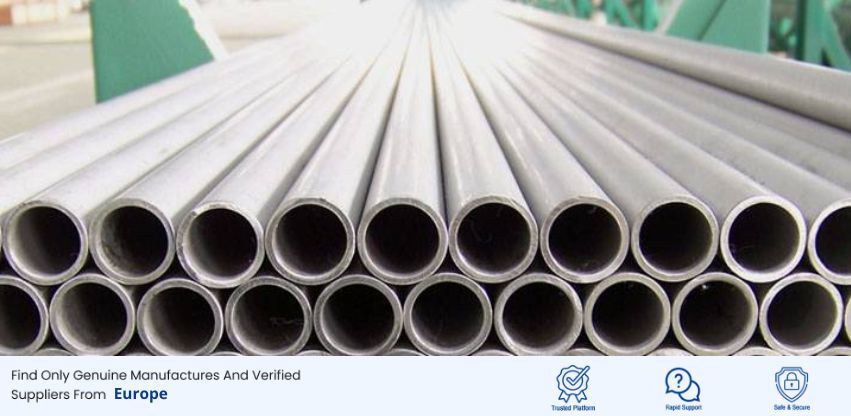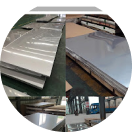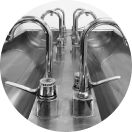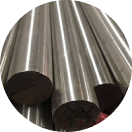Duplex Pipe Manufacturers, Suppliers & Exporters in Europe - PipingProjects.eu
PipingProjects.eu is one of the leading Duplex Pipe Manufacturer in Europe. Duplex Pipes are manufactured from a unique alloy comprising iron, nickel, and chromium and exhibit a two-phase microstructure at room temperature, seamlessly blending the characteristics of ferritic and austenitic stainless steels. Renowned for their versatility, duplex steel pipes find widespread utility across various global applications. The duplex microstructure, combining the best features of both ferritic and austenitic steels, positions these pipes as robust solutions for industries requiring high-performance materials. We are also a top Duplex Pipe Supplier in Europe.
What is Duplex Pipe?
The Duplex Pipe is made from a corrosion-resistant alloy known as duplex stainless steel. This alloy combines the properties of austenitic (such as high corrosion resistance and strength) and ferritic (such as ease of fabrication and stress corrosion cracking resistance) stainless steels. The result is a robust and durable pipe material that exhibits excellent resistance to various corrosive environments, making it suitable for challenging conditions like those encountered in the chemical, petrochemical, and oil and gas industries.
The duplex structure of the pipe enhances its mechanical strength and corrosion resistance, allowing it to withstand harsh and corrosive environments more effectively than conventional stainless steel pipes. Common grades of duplex stainless steel used for pipes include 2205 (UNS S31803/S32205) and 2507 (UNS S32750), each offering a unique balance of properties to meet specific industry requirements.
Top leading Manufacturing Companies
What sets Duplex Steel Pipes apart from other material pipes?
- Duplex steel pipes stand out from other materials due to their unique combination of properties derived from the duplex stainless steel alloy. The distinguishing feature lies in the dual-phase microstructure, comprising both austenitic and ferritic phases. This amalgamation imparts exceptional corrosion resistance, high strength, and improved toughness, setting duplex steel pipes apart from traditional stainless or carbon steel pipes. The duplex structure enhances resistance to stress corrosion cracking and pitting, making these pipes ideal for applications in aggressive environments, such as those in chemical processing, oil and gas, and marine industries.
- Another critical factor differentiating duplex steel pipes is their versatility, balancing corrosion resistance and cost-effectiveness. Duplex steel is an attractive choice for applications where the demands for durability and resistance to corrosion are high, yet cost considerations are still relevant.
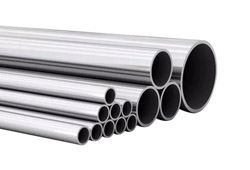
Duplex Pipe
Duplex Pipe - Specifications
- Product : Duplex Pipe
- Wall Thickness : 1/8″NB TO 48″NB IN
- Outer Diameter : Upto 355.60 mm
- Length : Upto 14 mtr
- Standards : JIS, AISI, ASME, ASTM, AMS, GB, DIN, EN, GOST
- End : Plain End, Bevelled End
- Grades : T91 - P91

Trusted
Supplier

Genuine
Product

Easy
purchase
Applications of Duplex Pipe in the Industry
- Oil & Gas Industry:
Duplex steel pipes find extensive applications in the oil and gas sector, particularly in offshore drilling operations where exposure to harsh environments and corrosive conditions is prevalent.
- Chemical Industry:
Duplex Pipes are commonly used in the chemical industry for handling corrosive chemicals and substances, thanks to their excellent corrosion resistance and durability.
- Pulp & Paper Industry:
Duplex steel pipes are suitable for applications in the pulp and paper industry, where resistance to both chemicals and abrasion is essential for transporting corrosive liquids and slurries.
- Marine & Shipbuilding:
Duplex steel pipes are employed in marine applications, including shipbuilding and offshore structures, where their corrosion resistance and high strength make them ideal for withstanding the challenging conditions of seawater.
- Power Generation:
Duplex Pipes are used in power plants, especially in areas where exposure to aggressive chemicals or high-pressure conditions requires a corrosion-resistant material for transporting steam and other fluids.
- Construction:
In construction projects requiring corrosion-resistant and durable piping systems, Duplex Pipes convey fluids in various structures, such as bridges and industrial facilities.
- Food & Beverage Industry:
Duplex steel pipes are employed in the food and beverage sector, where hygiene and resistance to corrosion are crucial for transporting liquids and maintaining sanitary conditions in processing plants.
- Automotive Industry:
In specific automotive and transportation applications, Duplex Pipes are used for their strength and resistance to corrosion, providing reliable performance in exhaust systems
Duplex Pipe Thickness Chart
Explore our comprehensive Duplex Pipe Thickness Chart ensuring optimal performance and longevity. As a leading Duplex Pipe Supplier in Europe, we provide detailed gauge information for informed decision-making in various industrial applications.
Thickness Chart of Duplex Pipe
SCH
10S |
SCH
40S |
DN |
Ø |
SCH
80S |
SCH
160 |
| 2,11 |
2,77 |
1/2″ |
21,34 |
3,73 |
4,78 |
| 2,11 |
2,87 |
3/4″ |
26,67 |
3,91 |
5,56 |
| 2,77 |
3,38 |
1″ |
33,40 |
4,55 |
6,35 |
| 2,77 |
3,56 |
1 1/4″ |
42,16 |
4,85 |
6,35 |
| 2,77 |
3,68 |
1 1/2″ |
48,26 |
5,08 |
7,14 |
| 2,77 |
3,91 |
2″ |
60,32 |
5,54 |
8,74 |
| 3,05 |
5,16 |
2 1/2″ |
73,03 |
7,01 |
9,52 |
| 3,05 |
5,49 |
3″ |
88,90 |
7,62 |
11,13 |
| 3,05 |
5,74 |
3 1/2″ |
101,60 |
8,08 |
|
| 3,05 |
6,02 |
4″ |
114,30 |
8,56 |
13,49 |
| 3,40 |
6,55 |
5″ |
141,30 |
9,53 |
15,88 |
SCH
10S |
SCH
40S |
DN |
Ø |
SCH
80S |
SCH
160 |
| 3,40 |
7,11 |
6″ |
168,29 |
10,97 |
18,26 |
| 3,76 |
8,18 |
8″ |
219,08 |
12,70 |
22,23 |
| 4,19 |
9,27 |
10″ |
273,08 |
12,70 |
28,58 |
| 4,57 |
9,53 |
12″ |
323,85 |
12,70 |
33,32 |
| 4,78 |
– |
14″ |
355,60 |
– |
– |
| 4,78 |
– |
16″ |
406,40 |
– |
– |
| 4,78 |
– |
18″ |
457,20 |
– |
– |
| 5,54 |
– |
20″ |
508,00 |
– |
– |
| 6,35 |
– |
24″ |
609,60 |
– |
– |
SCH
10S |
SCH
40S |
DN |
Ø |
SCH
80S |
SCH
160 |
Advantages of using Duplex Pipes
- Duplex Pipes offer several distinct advantages, making them a preferred choice in various industries. Their outstanding corrosion resistance is a crucial advantage, particularly in aggressive environments containing corrosive substances such as acids and chlorides. The dual-phase microstructure of duplex stainless steel provides an inherent resistance to pitting, crevice corrosion, and stress corrosion cracking, ensuring the integrity and longevity of the piping system.
- The high strength of Duplex Pipes sets them apart, allowing for the design and construction of more lightweight and cost-effective piping systems. The combination of austenitic and ferritic phases in duplex stainless steel enhances mechanical properties, enabling the pipes to withstand high pressures and temperatures. This advantage is precious in industries such as power generation, where the reliability and strength of the piping infrastructure are crucial for efficient and safe operations.
- Additionally, the versatility of duplex stainless steel contributes to its widespread use. Duplex Pipes balance performance and cost-effectiveness, making them economical for various applications. The material's durability, ease of fabrication, and corrosion resistance make Duplex Pipes a practical solution for industries seeking long-lasting and low-maintenance piping systems. Overall, the advantages of corrosion resistance, high strength, and versatility position Duplex Pipes as a reliable and efficient option for various industrial applications.
Various Types of Duplex Pipe We Supply
PipingProjects.eu is a leading Duplex Pipe Manufacturers in Europe. We supply different types of Duplex Pipes to meet diverse industrial needs with superior quality and precision.
Tolerance Chart of Duplex Pipe
As a trusted Duplex Pipe Manufacturer in Europe, we provide comprehensive size information to facilitate accurate decision-making in various applications.
Duplex Pipe Tolerance Chart
Outer diameter
(OD) |
Wall thickness
% |
Permissible deviations
in mm |
| 1/8″ < 2″ |
-12,5 |
+0,4 / -0,8 |
| > 1 1/2″ < 5″ |
-12,5 |
+0,8 / -0,8 |
| > 4″ < 10″ |
-12,5 |
+1,6 / -0,8 |
| > 8″ < 20″ |
-12,5 |
+2,4 / -0,8 |
| > 18″ < 28″ |
-12,5 |
+3,2 / -0,8 |
| > 26″ < 32″ |
-12,5 |
+4,0 / -0,8 |
How to prevent corrosion in Duplex Pipes?
- Preventing corrosion in Duplex Pipes involves implementing several proactive measures to maintain the integrity and longevity of the piping system. First and foremost, proper material selection is critical. Choosing the correct duplex stainless steel grade based on the specific environment and application helps ensure optimal corrosion resistance. Common grades such as 2205 and 2507 are selected for their ability to withstand corrosive substances and harsh conditions.
- Additionally, adopting effective corrosion prevention methods, such as regular inspection, maintenance, and the application of protective coatings, is essential. Routine inspections can identify early signs of corrosion, allowing for timely repairs or replacements. Protective coatings, such as passivation treatments or corrosion inhibitors, can be applied to the surface of Duplex Pipes to create a barrier against corrosive elements. Proper installation practices, including avoiding contact with incompatible materials and minimizing exposure to aggressive chemicals, prevent corrosion in Duplex Pipes.
Duplex Pipe Chemical Composition
As a trusted Duplex Pipe Manufacturer in Europe, we specialize in producing top-quality Duplex Pipes, offering corrosion resistance and superior chemical properties for diverse industrial applications.
Chemical Composition of Duplex Pipe
| |
N |
Mn |
C |
Si |
S |
P |
Mo |
Cr |
Ni |
| 2205 (S31803) |
min: 0.08 max: 0.20 |
2.0 max |
0.03 max |
1.0 max |
0.02 max |
0.03 max |
min: 2.5 max 35 |
min: 21.0 max 23.0 |
min: 4.5 max: 6.5 |
| 2205 (S32205) |
min: 0.14 max: 0.20 |
2.0 max |
0.03 max |
1.0 max |
0.02 max |
0.03 max |
min: 3.0 max: 35 |
min: 22.0 max 23.0 |
min: 4.5 max: 6.5 |
Duplex Pipe Mechanical Properties
As a top Duplex Pipe Supplier in Europe, we specialize in manufactruing Duplex Pipes, offering superior mechanical properties for diverse industrial applications.
Mechanical Properties of Duplex Pipe
| Material |
Elongation |
Yield Strength (min) |
Tensile Strength (min) |
Hardness(HB) max |
| Duplex |
25 |
65 |
90 |
217 |
Manufacturing Process of Duplex Pipes
Duplex Pipe is produced in seven steps. It manufactures a wide range of shapes, goods, and parts, ranging from Duplex Pipe and Coil.
- Step 1 : Raw Material Selection
To begin the process of creating Duplex, raw materials such as iron ore and other elements including nickel, chromium, and molybdenum are carefully selected. The choice of alloying elements depends on the specific properties that the Duplex is intended to possess.
- Step 2 : Smelting and Melting
Once the raw materials have been selected, they are smelted in a furnace to create a molten metal alloy. The composition of the alloy is closely monitored and controlled to achieve the desired grade of Duplex.
- Step 3 : Forming
After the molten Duplex has been produced, it is cast into different shapes and forms, depending on its intended use. The most common shapes include slabs, billets, blooms, or ingots.
- Step 4 : Primary & Secondary Steelmaking
The subsequent step is primary steelmaking, which can be accomplished through different methods such as the Basic Oxygen Furnace (BOF) or the Electric Arc Furnace (EAF). At this stage, impurities like carbon are eliminated to achieve the desired chemical composition.
- Step 5 : Casting
The molten Duplex is then cast into semi-finished forms, which can take the shape of plates, sheets, bars, or other forms. Continuous casting or ingot casting methods are usually employed for this purpose.
- Step 6 : Hot Rolling
In the case of products like Duplex Pipes, the semi-finished castings are hot-rolled to achieve the desired thickness and shape. During this process, the thickness of the castings is reduced while improving their mechanical properties.
- Step 7 : Cold Rolling and Annealing
In the case of specific Duplex products such as thin sheets and coils, cold rolling is employed to further reduce the thickness and enhance surface finish. To relieve stresses and enhance corrosion resistance, annealing is frequently performed.
